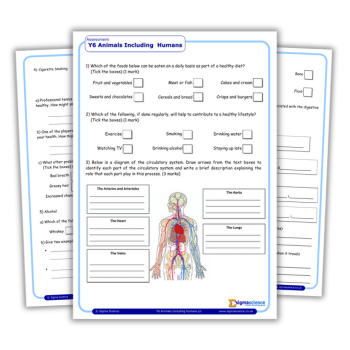Assessment in primary schools – Too many approaches don’t provide informed actions

Too many assessment approaches generate pretty graphs but don’t provide informed actions, says Joshua Perry…

- by Joshua Perry

Much has changed in primary assessment since 2015. We no longer have levels, of course, and Ofsted has stopped looking at internal performance data. The government even came up with a workload reduction toolkit focusing specifically on school data.
However, if you’re working in an English primary school, you may well not feel like things have moved on, because plenty of schools are still breaking down subjects into detailed rubrics with performance descriptors, asking teachers to make frequent judgements about pupils’ attainment using these descriptors and aggregating granular judgements into summative grades.
Many schools also schedule half-termly data drops and track ‘points of progress’ between data drops. Such practices may have appealing qualities, but they are nonetheless highly problematic. Here’s why:
Teacher judgements are less reliable than tests
They are subjective, so prone to vagueness and bias. In contrast, tests are comprised of questions which treat everyone equally. Moreover, teacher judgements require you to mark against a rubric, and that’s hard.
As Daisy Christodoulou points out in a blog post, gathering evidence to cross-reference with level descriptors “is at the limits of human cognitive capacity”.
That said, not all aspects of learning can be easily assessed through questions.
Take Early Years, for instance: ELG 4 (Moving and Handling) on the EYFS profile requires evaluation of whether children “handle equipment and tools effectively”.
Clearly, a written question doesn’t really cut it here, but the point remains: if you can assess something with well-designed questions, you’re better off doing so.
Assessment isn’t alchemy
The problems compound when schools use granular teacher judgements to derive summative grades. The systems may look clever – “our tracking system automagically calculates a single grade from these 30 lower-level judgements!” – but the theory doesn’t stand up to scrutiny.
If you ask a busy teacher to make lots of judgements about each individual student, there’s just no way they’ll record them all reliably.
That means you’re aggregating dodgy data, and as we learnt during the summer A-levels grading fiasco, no amount of algorithmic alchemy will turn judgement lead into summative gold.
Half-termly data drops are too frequent
The DfE’s ‘Making data work’ report states, “We see no reason why a school should have more than two or three attainment data collection points a year”. More than that and you add tonnes of workload in an overoptimistic search for microscopic progress increments.
Points of progress don’t work
Points-based systems can look wonderfully neat and precise. You can draw flight-paths! You can examine the ‘rate of progress’!
However, the problem is that learning doesn’t happen like that. Students do not absorb equally sized parcels of information each half term, and they don’t progress in a nice, even fashion.
Learning is non-linear, and a child may need to revisit a topic multiple times before knowledge is embedded. No shimmering points system is going to overcome this. In other words, it’s easy to design an assessment approach that seems sensible, but contains fundamental flaws.
Thankfully, there are better ways, and now is a great time to change what you’re doing.
The Covid crisis has already forced schools to press pause on previous assessment practices so why return to the old ways?
After all, if you ditch the voodoo elements of your assessment policy, you will free up time to:
Focus on formative quizzes
Schools are increasingly directing their energies onto high-quality, low-stakes assessment. Systems like Oak National, Quizlet and Carousel (which I co-founded) help schools to set frequent, relevant quizzes.
More schools are also going back and retesting topics multiple times to help students embed knowledge (an evidence-based technique called ‘spaced repetition’).
High-quality question banks can be shared between teachers, and marking can be automated so that teacher time is instead spent on identifying (and rectifying) gaps in learning.
Improve the quality of summative assessments
Standardised assessments from vendors like RS Assessment and Renaissance can be a good option for summative assessment, offering well-designed questions and national benchmarking.
However, they come at a cost, and the range of subjects available is limited, so more and more MATs are going even further and creating their own tests.
Above all, both formative and summative assessments should be designed and used in a way that informs teachers’ decision-making processes. Too many systems generate pretty graphs, but do nothing to help teachers and leaders take informed actions.
So let’s ditch the magical thinking, and put questions at the heart of primary assessment.
Joshua Perry is an edtech entrepreneur and co-founder of school assessments systems Carousel and Smartgrade. Prior to this he ran analytics platform Assembly and was also a member of the leadership team of Ark Schools. Find him at carousel-learning.com and follow him on Twitter at @bringmoredata.







